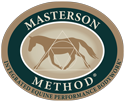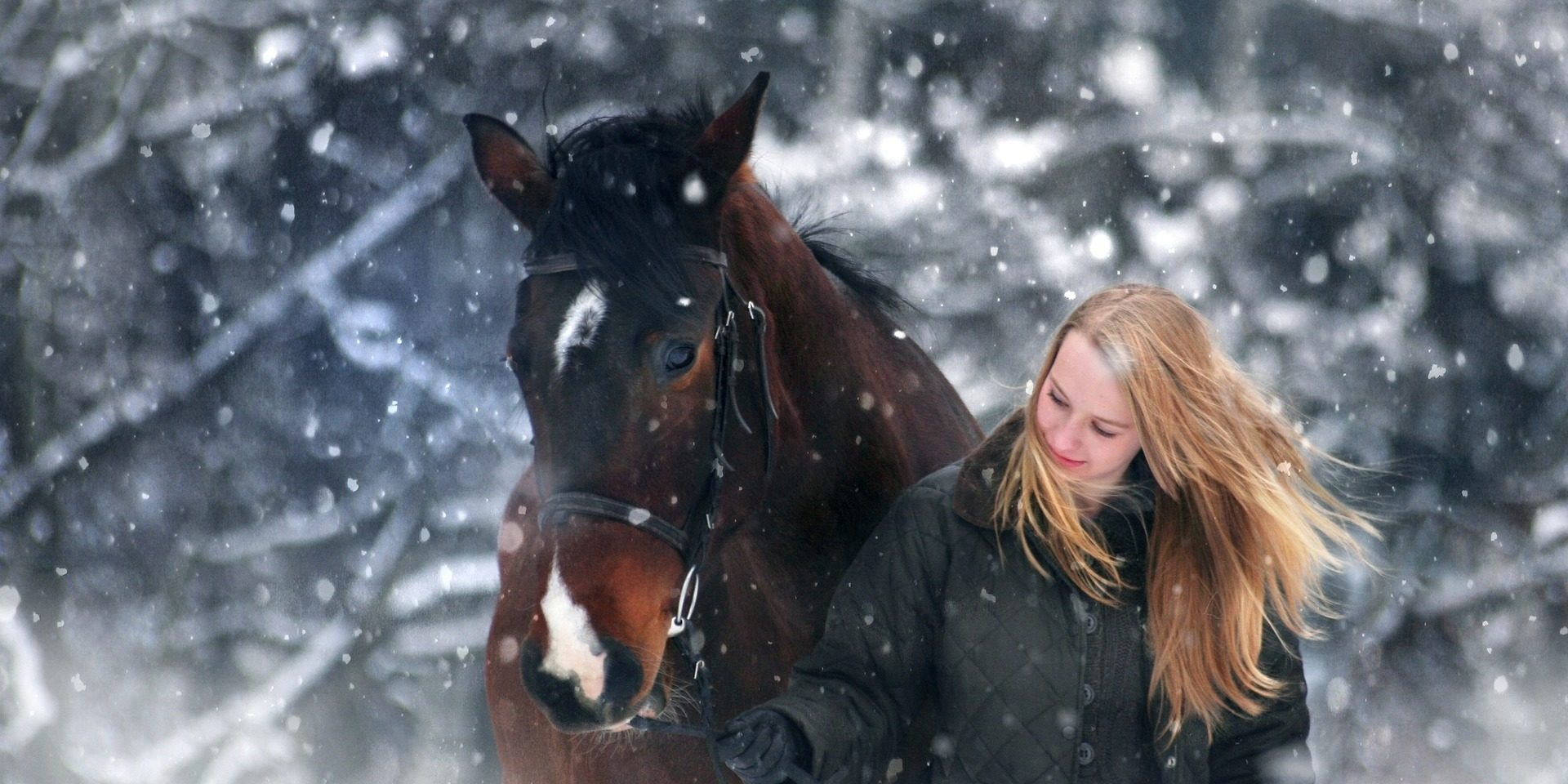It’s officially winter, which in cold northern climates means lots of mud or a diabolically freezing nightmare with ice and snow. We asked our Masterson Method Certified Practitioners (MMCPs) their thoughts on bodywork in the cold winter months and have updated our Winter Bodywork Tips for you.
While it may not always be comfortable, regular bodywork is just as important in the winter months as more temperate seasons. Bodywork can help prevent strains by keeping the horse supple, and the practitioner can detect and address torque and tension before it snowballs into a major injury. Having a bodywork practitioner on your horse care team will be beneficial throughout the winter months.
Let’s begin with the common challenges horses encounter in colder climates and address each one.
Maintaining Balance and Stability
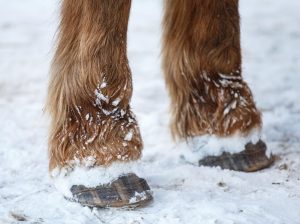 In winter months, wet, muddy or icy ground can cause more slips and slides, requiring horses to rebalance themselves frequently to remain stable. Wet snow can easily form ice balls under their hooves, which causes other balance strains. Deep mud in less frigid climates will also strain muscles and joints.
In winter months, wet, muddy or icy ground can cause more slips and slides, requiring horses to rebalance themselves frequently to remain stable. Wet snow can easily form ice balls under their hooves, which causes other balance strains. Deep mud in less frigid climates will also strain muscles and joints.
Stability challenges can impact where a horse might hold tension in their body. Your MMCP will evaluate your horse to look for any reactions that indicate discomfort somewhere that they wouldn’t normally expect to see. If you’ve taken the Advanced 5-Day Course, you will have learned how to evaluate a horse and can put those skills to practice. Then, you or your MMCP can address any areas of strain by keeping the big picture in mind: work the whole horse, start where it’s easy, follow the blink, and consider the interconnections in the body.
Limited Exercise
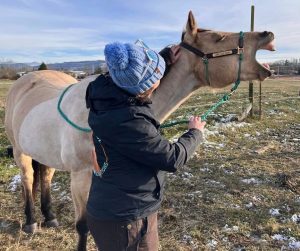 Winter in cold climates may mean that horses get less exercise (too cold to ride) and/or turnout time (too icy to let them out), which means less movement. Unless your horse is on stall rest (box rest), lack of movement is never good. Movement is crucial for helping horses maintain good core strength, muscle tone, and joint health as well as aiding digestion and blood flow.
Winter in cold climates may mean that horses get less exercise (too cold to ride) and/or turnout time (too icy to let them out), which means less movement. Unless your horse is on stall rest (box rest), lack of movement is never good. Movement is crucial for helping horses maintain good core strength, muscle tone, and joint health as well as aiding digestion and blood flow.
For horses with limited turnout or exercise, go slowly. The Bladder Meridian Technique is a great one to begin with. At some point, you’ll want to apply the range-of-motion techniques (movement in a relaxed state) to help maintain healthy joints, such as Scapula Releases, Lateral Cervical Flexion, Head Down, Head Up, Tongue-Hyoid Release, Hind Leg Releases, and/or Lateral Rocking.
Aside from the physical benefits from bodywork when exercise is a challenge, it’s also a great alternative activity for a horse and owner to participate in together, and to give something back to the horse. Whether you are doing just the Bladder Meridian or watching an MMCP provide the advanced techniques with your horse, spending time in this way can help foster your connection and engagement.
The Impact of Blankets
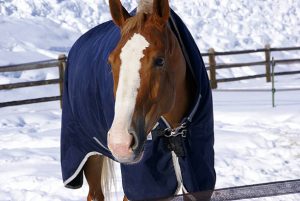
Another consideration in cold winters is how heavy blankets/rugs might impact the horse’s body. You might notice a horse is carrying more tension around the withers or shoulders due to the weight and/or fit of the blanket/rug.
For horses who wear heavy blankets, you might apply techniques like Scapula Releases, Withers Wiggle, and Under Scapula (Under Scapula is done after all front-end work; be sure to use your sense of feel, always following the horse’s responses). These will help release tension in the muscles that surround the thoracic vertebrae and beneath the scapula itself, which can help release any accumulated stress in the shoulders and front end. You can even extend Withers Wiggle down the length of the spine in a technique we call Extended Withers Wiggle in the Light to the Core course and video.
Soreness and Stiffness
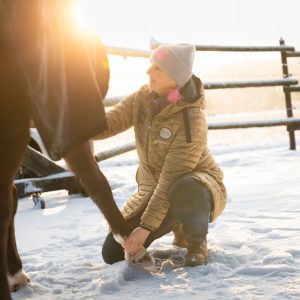 Note that horses can become sorer in the winter months, especially those with arthritis and/or metabolic issues. Be extra gentle, emphasizing the light-touch techniques and micro-wiggles to get movement in a relaxed state. The techniques in the Light to the Core video or course are perfect for horses exhibiting extra tenderness. You can also review the Jim-isms or Masterson Method Mottos article for ideas, and be mindful to follow the blinks and adjust your touch as needed.
Note that horses can become sorer in the winter months, especially those with arthritis and/or metabolic issues. Be extra gentle, emphasizing the light-touch techniques and micro-wiggles to get movement in a relaxed state. The techniques in the Light to the Core video or course are perfect for horses exhibiting extra tenderness. You can also review the Jim-isms or Masterson Method Mottos article for ideas, and be mindful to follow the blinks and adjust your touch as needed.
Keeping Horses Comfortable During Bodywork in Cold Weather
It would be difficult for both the horse and the bodywork practitioner to stay relaxed in extreme cold, or during heavy snowfall or rain, so choosing when and where to work is the first consideration.
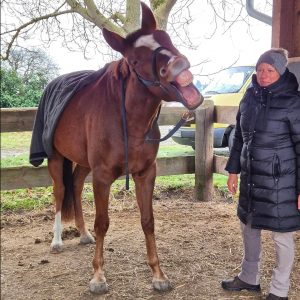 A horse can get cold, but you will likely be cold long before they will be. Check their legs especially for shivering, and behind the elbow or at the base of the ear to feel how warm they are. You can drape a blanket (or rug) over the area where you aren’t working. Often however, the bodywork will warm them up. If it is so cold you cannot work with them without peeling the blank back, it may be better to work on them in slightly warmer conditions or find somewhere free of drafts indoors.
A horse can get cold, but you will likely be cold long before they will be. Check their legs especially for shivering, and behind the elbow or at the base of the ear to feel how warm they are. You can drape a blanket (or rug) over the area where you aren’t working. Often however, the bodywork will warm them up. If it is so cold you cannot work with them without peeling the blank back, it may be better to work on them in slightly warmer conditions or find somewhere free of drafts indoors.
Transitioning back to the cold outdoors should be done mindfully. After the bodywork, let them move around at liberty (if they won’t get overly excited), hand walk them in an indoor arena, or keep them warm inside for a while before going outside.
Some MMCPs discovered that static electricity can be an issue in the winter months where the air is cold and dry. They found that a damp towel in a Ziplock baggie or dryer sheets in your pockets to wipe the horse down or your hands can reduce static. (Nothing worse than static shocks when you’re trying to relax the horse!)
Keeping Ourselves Comfortable During Bodywork
First things first: warm clothes! Layer yourself up in clothes. Wear thermal shirts and pants under your work clothes, put lots of layers on top, and use wool socks. Put hand warmers in your pockets to have them ready to use anytime or even put them in your boots to warm them up before you wear them. There are also heated jackets or vests available, so that might be a great option for people living in really cold areas.
As for gloves, that is going to be a personal preference. Using fingerless gloves with the tips cut off leaving the fingertips exposed is a good option, but you may still need to warm your hands now and then with hand warmers in your pockets. Some MMCPs found that they’re able to do bodywork with gloves on. Just try it out and see what works for you.
Lastly, some MMCPs do stretches or light exercises to warm themselves up beforehand.
In Conclusion
The challenges of winter weather—maintaining stability and balance in slippery conditions, reduced exercise, restrictive blankets, soreness, and/or stiffness—can be met with the aid of Masterson Method bodywork, whether you’re doing the work or hiring a local practitioner (you can Find a Certified Equine Practitioner using our online directory). And remember, your bodywork, no matter what level of education you have in The Masterson Method, can still have a positive impact in the colder winter months.
If it’s just too cold out there, you might cozy down and review your Masterson Method educational materials until you’re ready to get out there. Wear lots of layers and do what works for you!
We’d like to thank Masterson Method Certified Practitioner (MMCP) Sabrina Wenzel for contributing photos, and the following MMCPs for contributing their ideas to this article: Alice Long, Carol Hunt, Janet Stephen, Lizzie Brewster, Megan Dushin, Monika Ermann, Nikki Kagan, Sabine Maas, Sonia Bascuñana, Suzanne Liscouski, and Vicky Devlin.
Visit the Masterson Method Store to purchase learning resources such as the Beyond Horse Massage book and DVD or Online Streaming, and visit Masterson Method Courses to find a hands-on Course near you.
